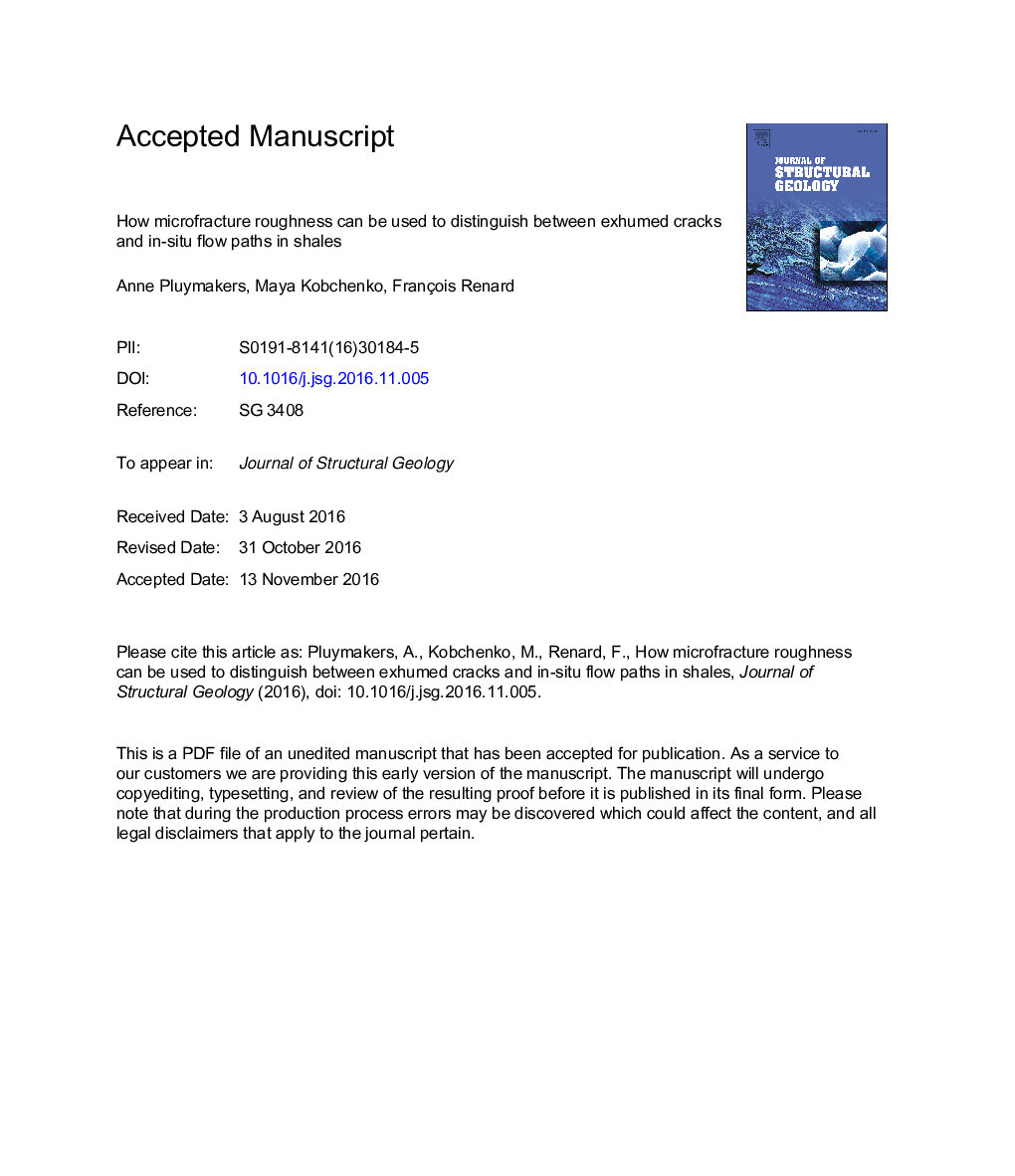| Article ID | Journal | Published Year | Pages | File Type |
|---|---|---|---|---|
| 5786378 | Journal of Structural Geology | 2017 | 38 Pages |
Abstract
Flow through fractures in shales is of importance to many geoengineering purposes. Shales are not only caprocks to hydrocarbon reservoirs and nuclear waste or CO2 storage sites, but also potential source and reservoir rocks for hydrocarbons. The presence of microfractures in shales controls their permeability and transport properties. Using X-ray micro-tomography and white light interferometry we scanned borehole samples obtained from 4Â km depth in the Pomeranian shales in Poland. These samples contain open exhumation/drying cracks as well as intact vein-rock interfaces plus one striated slip surface. At micron resolution and above tensile drying cracks exhibit a power-law roughness with a scaling exponent, called the Hurst exponent H, of 0.3. At sub-micron resolution we capture the properties of the clay interface only, with HÂ =Â 0.6. In contrast, the in-situ formed veins and slip surface exhibit HÂ =Â 0.4-0.5, which is deemed representative for in-situ fractures. These results are discussed in relation to the shale microstructure and linear elastic fracture mechanics theory. The data imply that the Hurst roughness exponent can be used as a microstructural criterion to distinguish between exhumation and in-situ fractures, providing a step forward towards the characterization of potential flow paths at depth in shales.
Related Topics
Physical Sciences and Engineering
Earth and Planetary Sciences
Geology
Authors
Anne Pluymakers, Maya Kobchenko, François Renard,
